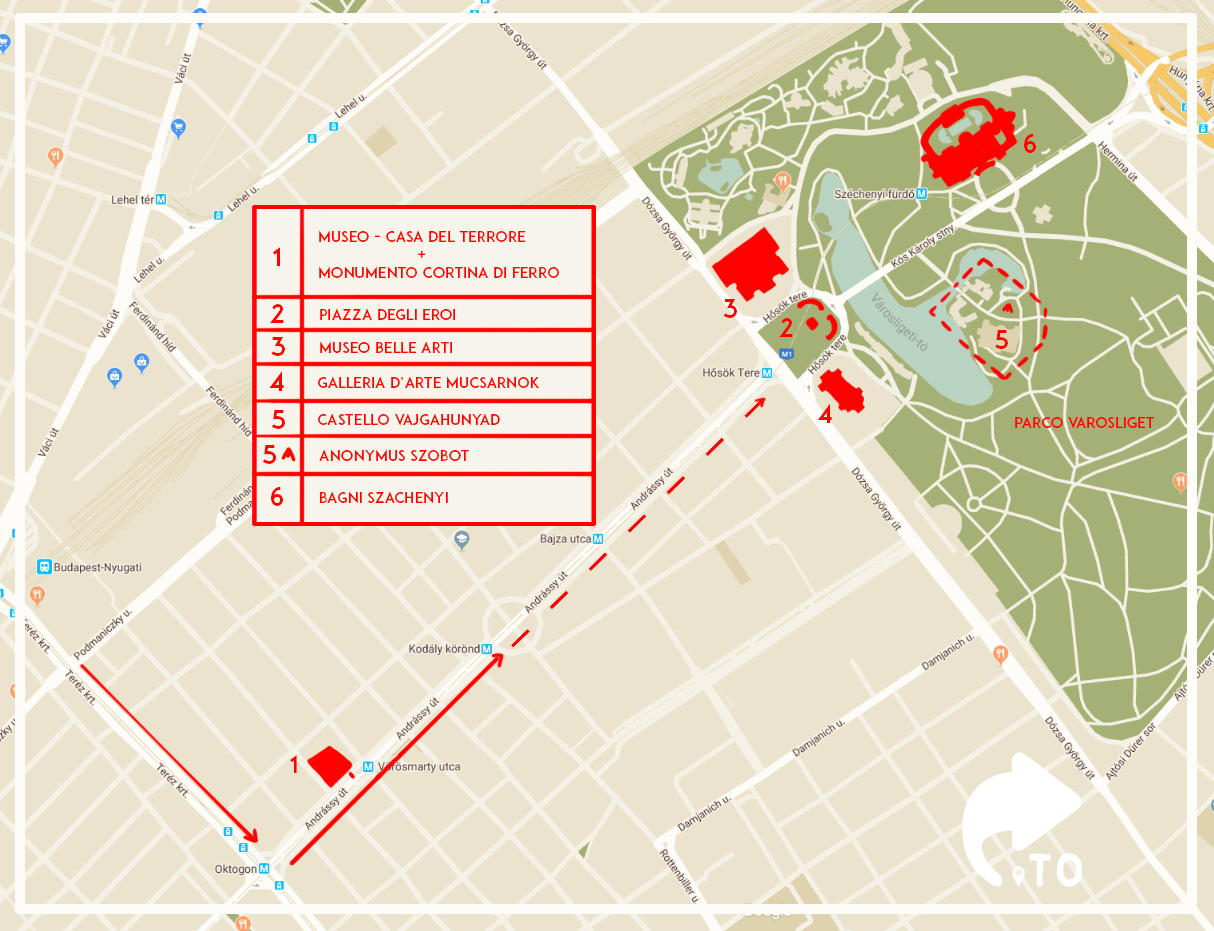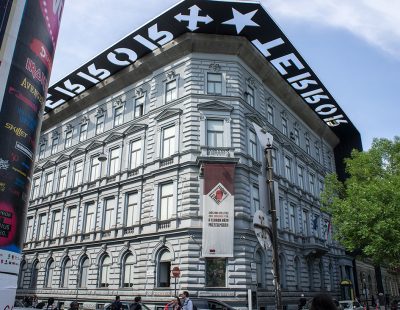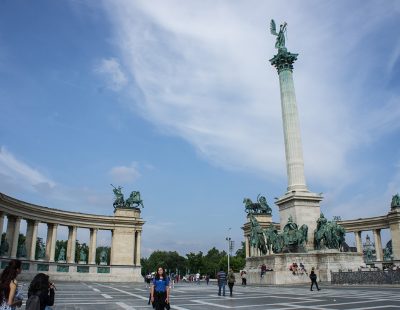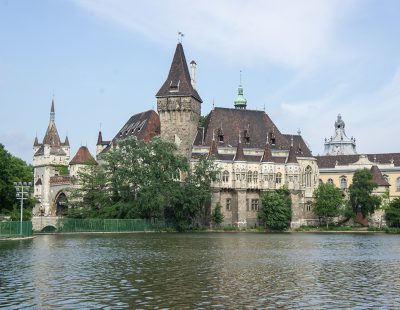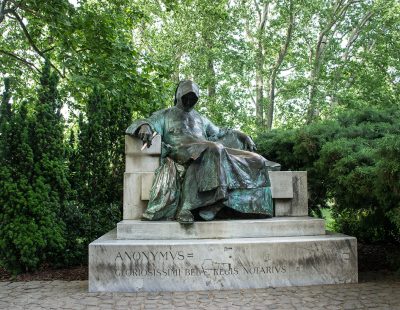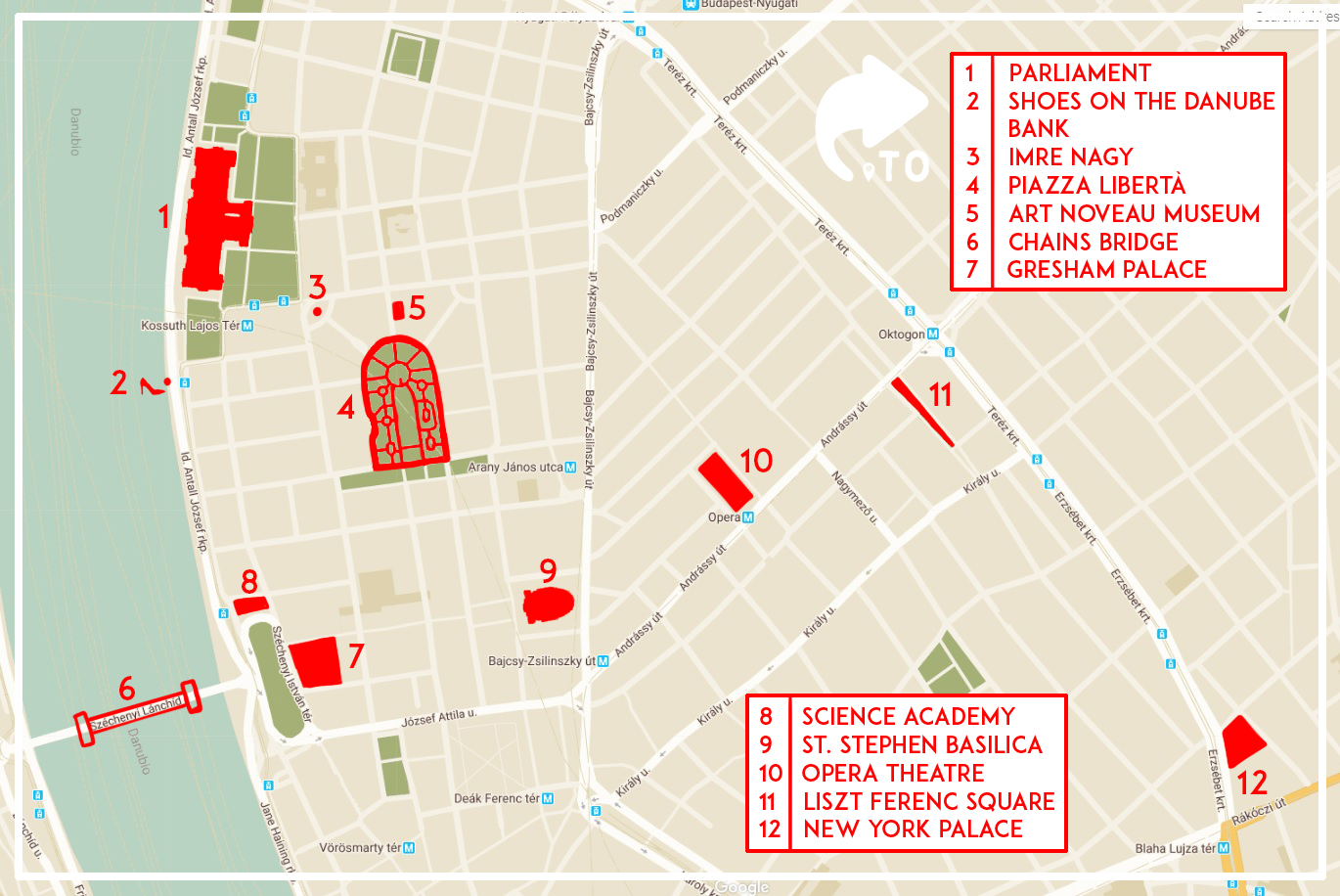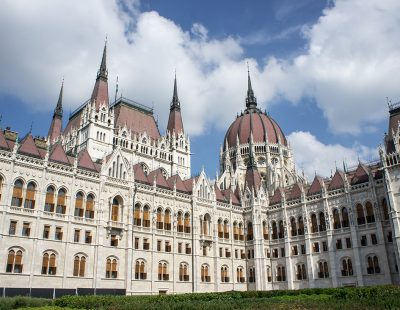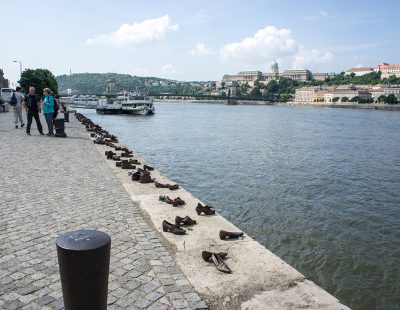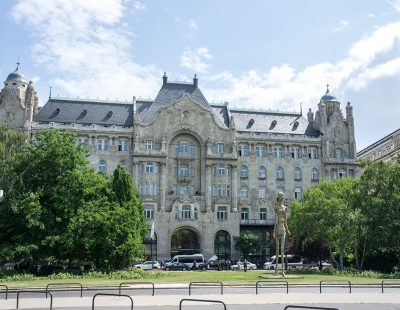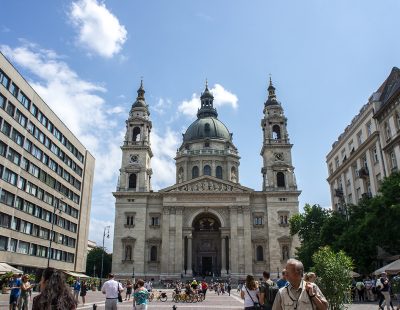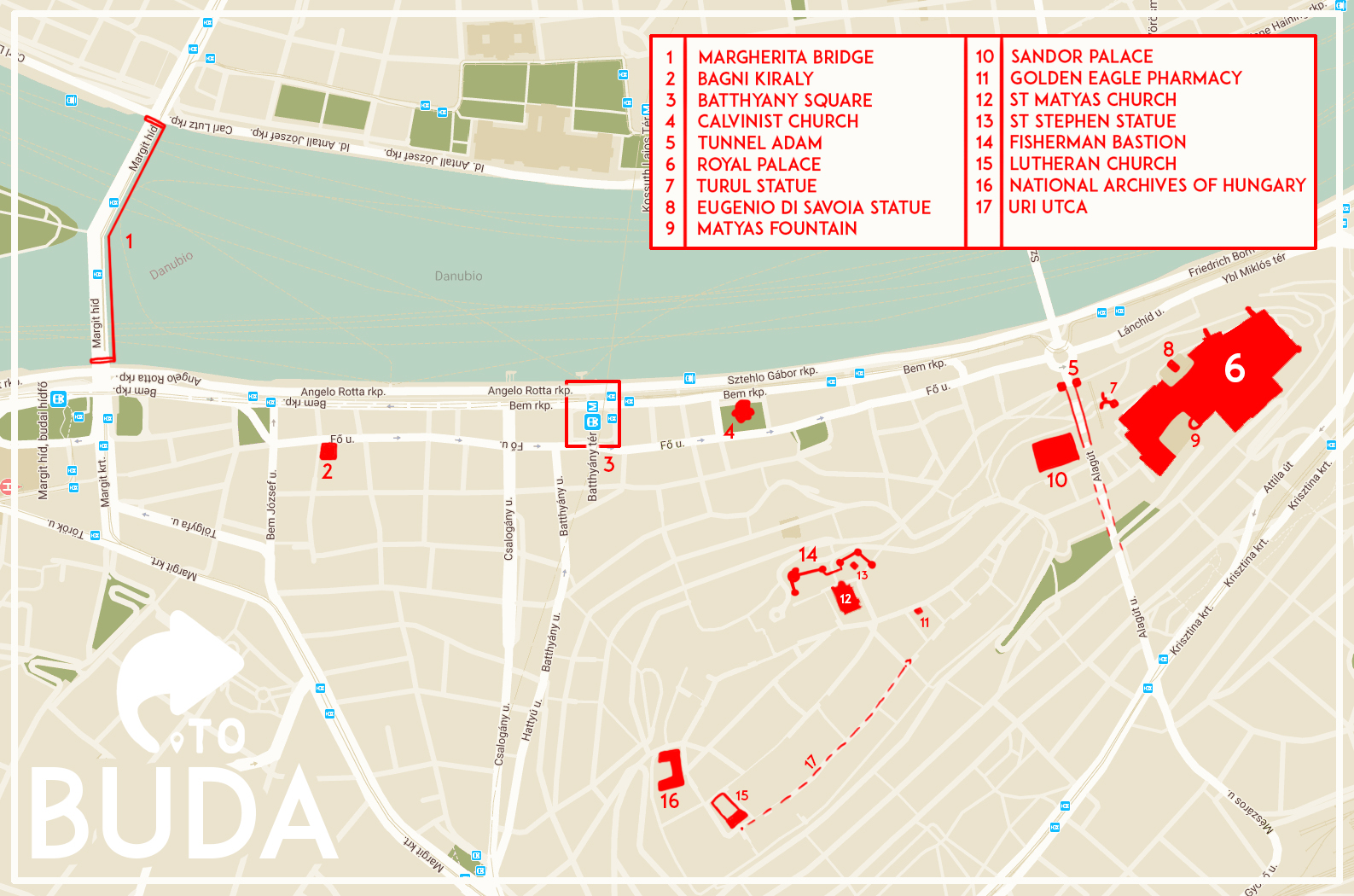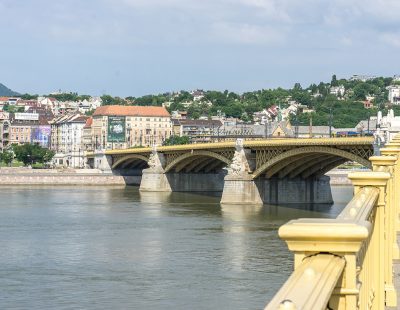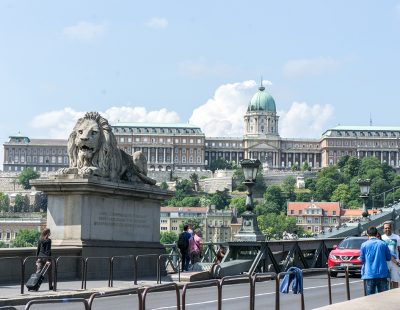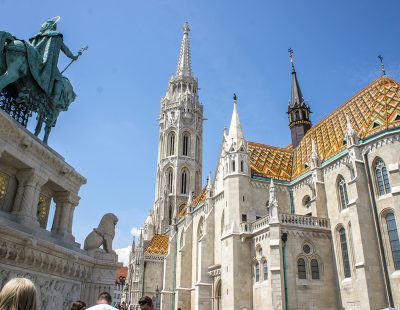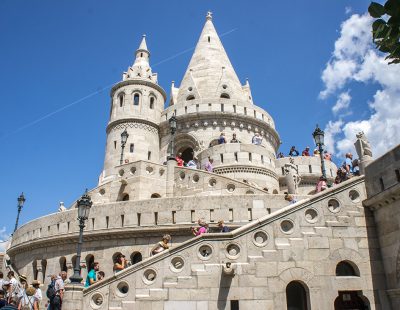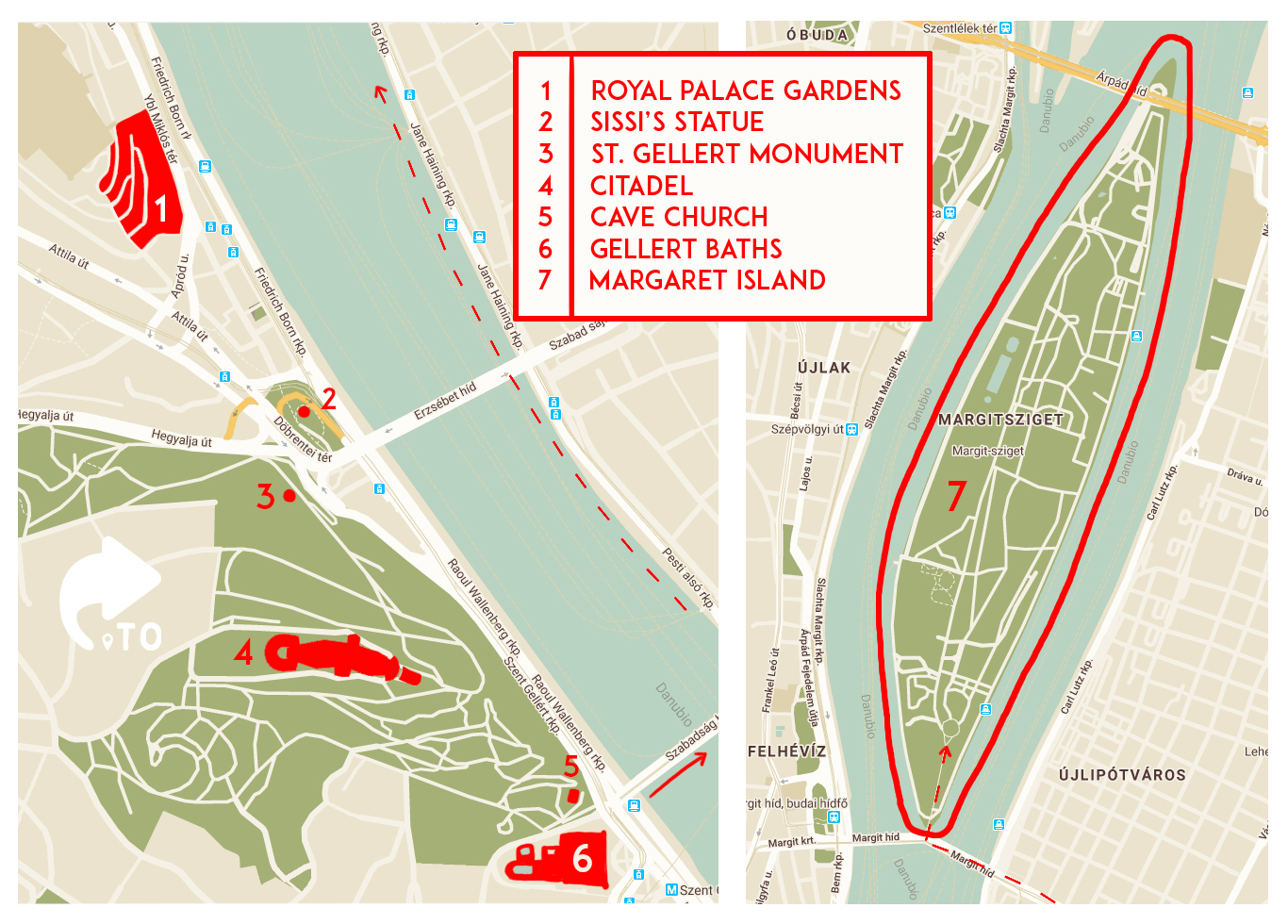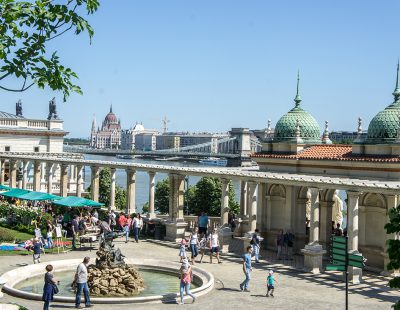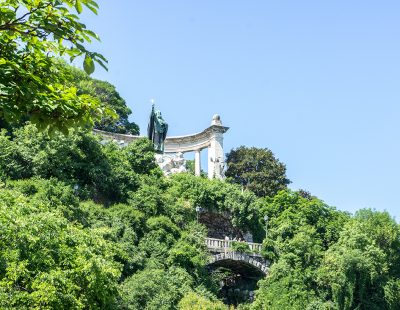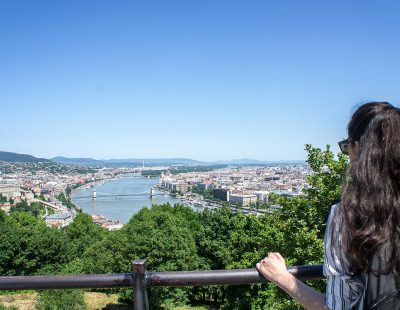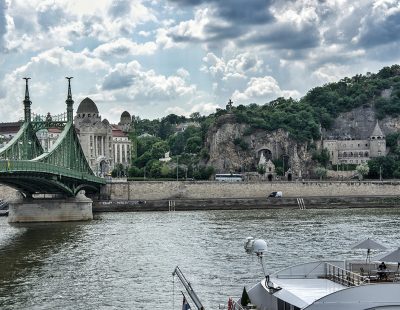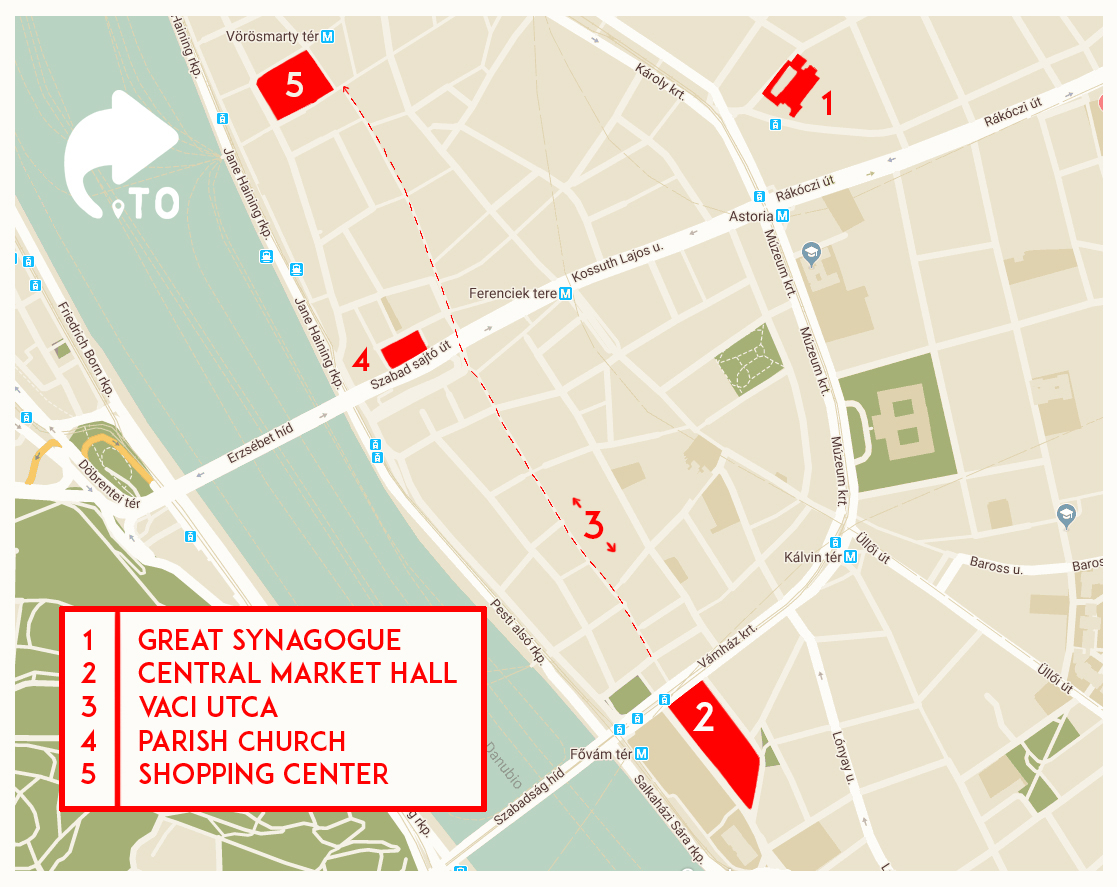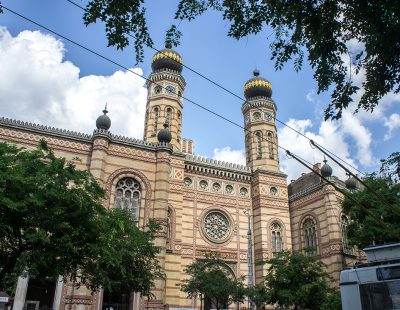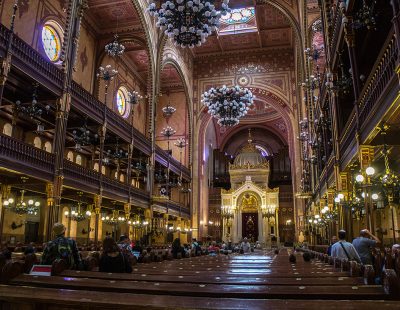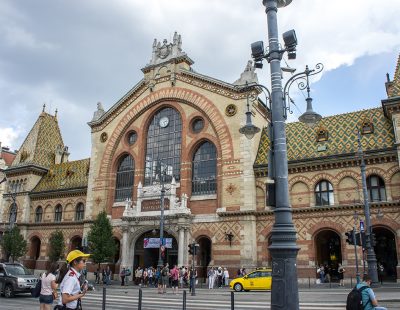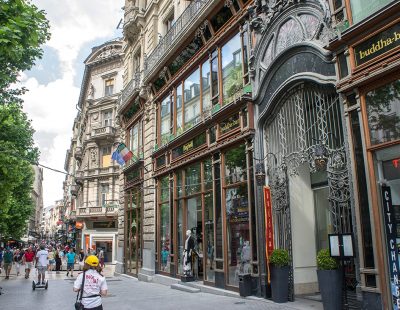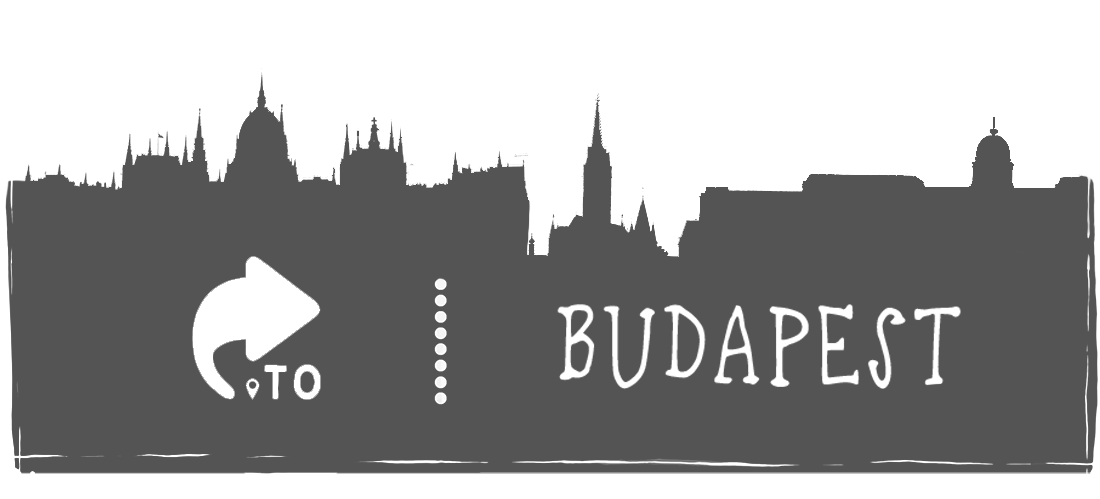
– MUST SEE IN 5 DAYS –
GIORNO • 1
Started mid-morning from the Bratislava train station, we arrived in the early afternoon in Budapest. Time to put our suitcases in our apartment and have lunch, we are ready to explore the Hungarian capital. On Andrássy street, full of cafes and restaurants as well as many shops, you can reach the Museum-House of Terror (1). This austere building was used as the headquarters of the secret services, both Nazi and communist, during mutual occupations. The black and white photographs of the victims, who were subjected to exhausting interrogations, were imprisoned and murdered, are hung along the outer walls of the palace, in memory of the fallen and of the barbarities carried out in that dark period of Hungarian history. Continuing along the way, past the buildings of the various embassies, you will arrive in Hereoes’ Square(2). This huge square and its monuments were designed for the celebrations of the millennium since the birth of the Magyar nation. From here you can access the park of Városliget, a beautiful city park in which the Vajdahunyad Castle (5) stands out. This fairytale building is not a real castle, but rather a complex of several buildings in various architectural styles, also built for the millennium celebrations. The work represents the evolution of architecture in Hungary. Today it houses the museum of agriculture. In the inner courtyard, you will find one of the most famous statues in Budapest: the anonymous chronicler.
GIORNO • 2
Pest – A whole day dedicated to the visit of the beautiful Pest. First stop is Kossuth Square, a place that houses many impressive buildings as the Parliament (1), the Ethnographic Museum and the Ministry of Agriculture. The short sides hold memorial monuments to various Hungarian leaders who fought for the independence of the nation. Moving towards the Danube you will find the melancholy statue of the poet József, sitting on the steps with his gaze directed to the river and further on, “Shoes on the Danube bank“(2) monument consisting of a series of abandoned shoes on the edge of the quay in the exact point where, during World War II, the Jews were thrown to drown in the waters of the Danube. Continuing, opposite the Chain Bridge (6), you will find Gresham Palace (7), one of the most significant examples of secessionist architecture of the city. Strong point? The wrought iron gate with peacock motifs, also admirable on the side gates. Continuing inwards you will meet the Saint Stephen’s Basilica (9). Dedicated to Stephen, the first Hungarian king of the Christian faith, the basilica was built mainly in the neoclassical style.
GIORNO • 3
Buda via ponte Margherita (1) – Set off early in the morning and choose an alternative route to reach the old town. The area on the west side of the Danube is in fact little visited but no less rich in beautiful historical buildings and some interesting views. Betthany Square (3) is exactly in a mirror position compared to the Parliament so do not miss the opportunity to photograph it from here. In addition to this, this square is home to some of the oldest houses in Buda, (such as the late-Baroque Hikisch Palace or the White Cross Inn with pretty rococo decorations), and it was also home to the first covered market of the town. Nearby you can visit the Király baths (2), among the few Ottoman Turkish baths left in the city, and the charming Calvinist church (4). Next stop Royal Palace (6), that you can reach by buying a ticket for the funicular or on foot with a series of paths and streets along the hill. The present-day Royal Palace is a remake of the nineteenth century one, built by the Habsburgs, and sadly destroyed in 1945. Today it houses three museums: the Budapest Historical Museum, the Széchényi National Library and the Hungarian National Gallery. Fabulous during the festive celebrations, when the entire square is filled with stands of local crafts and traditional food. Continuing inside the old city, near the wonderful church of St. Matyas (12) and the equestrian statue of Saint Stephen (13), you will be surprised by the Fishermen’s Bastions (14), a place that seems to come straight out of a fairy tales’ book. Climb up to its towers and look out onto its terraces, where you can admire Margaret Island, Pest and Gellert Hill. Then stop and enjoy an aperitif in one of the various cafés, waiting for the sunset and enjoying the splendid panoramic view.
GIORNO • 4
A ride on the trams of Budapest is a must, even better on the number 2 that runs parallel to the Danube and passes in front of some of the attractions of the town. Stop by the Chain Bridge, cross it and go to the Buda side. Proceed to the left and you will find the pavilion of the royal garden (1). It was built for the unification of Obuda, Buda and Pest into one city, but it suffered some damage during the Second World War. After a careful renovation, it reopened in 2014, and now houses information offices, restaurants, exhibitions and cultural events. Entrance to the garden is free while exhibitions are subject to charges. The next hill is known as the hill of Gellért and it is in this place that Bishop Gellért was killed by the pagans he was trying to convert to the Christian faith. Today it houses a spa complex, a public park, and many monuments (Monument to the Liberation, Citadella (4), Statue of San Gellért (3)) reachable by a hike through the paths. After crossing the Liberty Bridge and returning to the Pest side, take the tram nr. 2 in the opposite direction of the one in the morning. Get off at the terminal and you will be a few steps from the entrance of the Margaret Island (7). This is the real city park where the inhabitants of Budapest go in the weekends. Have a walk enjoying the nature and some attractions in the area, such as the monument to the Centenary of unification, the musical fountain and the Japanese garden.
GIORNO • 5
For the last day, have a walk in the Jewish quarter and a visit to the largest synagogue in Europe (1) whose interior will leave you speechless. The ticket includes a visit to the place of worship, the courtyard that became a cemetery during the Second World War, the Holocaust Memorial and the museum. Throughout the visit, (except inside the museum) you will be accompanied by a guide who will explain the history of the synagogue and the history of the Jewish community in Budapest. Then go to the central covered market (2) where you can taste local specialties and buy souvenirs. Once out, have a look in Váci street (3), the famous shopping area with designer shops, restaurants and cafes in the heart of the city. Do not miss to explore the surrounding area, where you will find squares, theaters, concert halls, institutional buildings and the parish church of the center.
Change Language:
ABOUT US

Hello! We are Raffaella and Simone, a couple in life as well as in travel, and the two souls behind Shortcut to.

Hello! We are Raffaella and Simone, a couple in life as well as in travel, and the two souls behind Shortcut to.
Engaged in a long distance relationship, we have spent many weekends milling miles from west to east (or vice versa) between trains, coincidences, suitcases to do and to unpack. Travel has always been in our destiny.
In May 2012 we travel for the first time together outside the national borders, the destination is London. Since then, whenever we can, we book a flight and leave for the next destination.
With our blog we want to encourage some traveler-dreamer, those who travel only sitting on the couch scrolling instagram, saying to themselves “this is not for me, I can not afford it “, to change your mind and leave. Our travels aren’t appearance, our photos are amateur and our budget is tight. If we can do it why can’t you?
If you like art and to visit museums, if you want advice on attractions or you want to visit as much as possible but you don’t know how to organize everything, if you want to know some economic alternatives on where to stay, eat or how to move around the city, our “shortcut” may be useful for you too!
Have a look and enjoy!
Subscribe for Newsletter!


Hello! We are Raffaella and Simone, a couple in life as well as in travel, and the two souls behind Shortcut to.
Engaged in a long distance relationship, we have spent many weekends milling miles from west to east (or vice versa) between trains, coincidences, suitcases to do and to unpack. Travel has always been in our destiny.
In May 2012 we travel for the first time together outside the national borders, the destination is London. Since then, whenever we can, we book a flight and leave for the next destination.
With our blog we want to encourage some traveler-dreamer, those who travel only sitting on the couch scrolling instagram, saying to themselves “this is not for me, I can not afford it “, to change your mind and leave. Our travels aren’t appearance, our photos are amateur and our budget is tight. If we can do it why can’t you?
If you like art and to visit museums, if you want advice on attractions or you want to visit as much as possible but you don’t know how to organize everything, if you want to know some economic alternatives on where to stay, eat or how to move around the city, our “shortcut” may be useful for you too!
Have a look and enjoy!

